Words and Pictures with Adam Ming
How he used his start up knowledge to sign 11 book deals in 2 years
This week we are joined by the inspiring illustrator
who explains how his previous experience working at start ups led him to approach a career in illustration differently and secure 11 book deals in 2 years.Adam also talked about dyslexia, his substack Ten Minute Artist and how he promotes himself.
Award-winning illustrator Adam Ming draws lessons from creative legends, industry experts, and his experience of rapidly breaking into international publishing from a third-world country. The start-up co-founder turned children’s book illustrator at 40 and signed 11 book deals in his first 2 years in Publishing.
Why are words and pictures important to you?
I’m dyslexic. As a child reading and communication was challenging for me in a way that can be difficult to understand. It’s often difficult for teachers or parents to understand - it can come off as stupid or lazy, but what it really is, is a different brain configuration, it’s like having a different hair colour except it’s just a different brain configuration, one designed for broad connection rather than deep liner thinking.
As such, words and pictures are a way I can make sense of the world and a way I can communicate most clearly.
For example, learning how to create mind maps help me learn how to start organizing my thoughts, which helped me make sense of the world better.
Illustrations in books and comics helped me develop a love for reading. And more recently illustrating books is a way I can express my unique way of seeing the world, what seems obvious to me is regarded as creative to other people, I know it’s just how my brain works.
So the combination of words and pictures is like my mother tongue as it helps me understand and communicate better than in any other language. The combination of words and pictures in comics, posters, sketches etc, is my native tongue.
Your bio says that you were a start-up co-founder before becoming an illustrator at 40, what skills did you learn as a co-founder that have helped the way you approach illustration work?
My experience in startups lead to some amazing opportunities. I got to travel the world, and spend some time in Silicon Valley where I visited a number of startups and learned how they operated. I even got a crash course on entrepreneurship at Stanford University.
I discovered that there are templates and strategies for just about any aspect of building a startup up. That knowledge was key and lead me to look for templates, when I started to explore a career in illustration. It is why I adopted a systematic way of thinking in my quest to become an illustrator.
I learned the 80/20 rule, which states that 80% of the outcome comes from 20% of the effort, this lead me to focus my effort on the 20% of things that create the most outcome. This is how I seem to be able to do a lot, when in truth, I’m doing carefully selected things.
I also learned to study the ‘competition’. This means looking at the activities and outcomes of various illustrators, and choosing to do the activities that produce the results I want. This study involves detective work analysing the steps and processes that lead to the jobs I want.
For example when I tried to figure our how much different illustrators earned and how much time and effort it took, I discovered that working in publishing pays better than trying to build an audience on social media which you can monetise through a patreon and products. This lead me to seek out an agent.
I also learned about product market fit, which meant that I created my style to appeal to parents and kids, and created an online presence to appeal to publishers.
Why did you decide to pursue illustration again 20 years after leaving art school?
Art school didn’t provide a path to a career in art, it only provided an experience, time to experiment, technical skill and peers. Which on its own wasn’t enough to make any progress at all in my creative career.
I did random creative work, such as menu design, photography, and mural paintings, but took all manner of jobs to supplement the income including selling cars, graphic design and working in start ups.
Working in startups was the real education I needed to become a freelance illustrator, because I learned every aspect of opperating a business, which is what is required as a freelance illustrator.
You signed an amazing 11 book deals in the first two years of publishing - what tips can you share for other illustrators who would love to do this too?
I do share a resource on my substack where I outline the journey and the things I did. In a nutshell I made a very specific goal to make a certain amount of money from illustrating books, and made choices and took action that led to that outcome.
So many choices impacted that outcome but the biggest ones are:
1. Developing a commercially desirable illustration style, I consider my illustration style a product or service that I am selling, and it has many strategic components. People don’t tend to approach illustration this way, but that’s what I did.
2. I obsessed about picture books, reading everything I could, taking every opportunity to get into virtual rooms with illustrators and people who hire illustrators to learn directly and indirectly from the people who had done the thing I wanted to do.
One particular insight I capitalised on was an underserved trend in the industry at the time of nonfiction books with characterful subjects. But I could only get the insights by being in those rooms, and it cost me thousands of dollars to be there, in classes and workshops as well as free opportunities and social media.
3. I used social media in an economical and effective way by leveraging the 80/20 rule. For example spending seconds to make reels of my process on instagram and participating in #kidlitartpostcard and being active on twitter. The actual activities are not as effective anymore but the principle of being selective and targeted is.
Are you a full time illustrator? If so, when were you able to make a full time living from it?
When I got serious about becoming an illustrator, I got a well paying startup job that required me to work 1 day a week, and I kept it for as long as I could… once the contract ended, 2 years in, I focused on illustration alone.
I’m barely able to make a living as a full time illustrator and this is the current challenge I’m looking to overcome. Writing my substack helps, but overall I need to find a way to sustain my ‘full time ness’ in general.
I think this goal of being a full time time illustrator is silly because as a creator, there is no real need to restrict yourself to any particular way of making money. That said book illustration makes up 80% of my income, and substack accounts for another 20%. I’m aiming to triple that total because it would require that to feel comfortable as the sole breadwinner of my family.
Why did you set up your substack Ten Minute Artist?
In the beginning, it was a document of my process, but as a community grew around it, I looked for ways to better serve the community. I also needed a way to stand out and be different from the other illustration substacks. Again I’m applying my startup model of thinking to create a product that serves an intended customer base.
The aim of the Ten Minute Artist isn’t to directly serve my illustration clients, instead my goal is to help turn struggling artists into thriving artists.
How do you create your illustrations? On paper or a computer? Can you talk us through your process.
1. I sketch very loosely on paper using what ever medium is most suitable aiming to capture the energy of the subject - I try to channel Quentin’s Blakes energy when I do this. I use reference heavily to learn about my subject through drawing, but the illustrations then tend to be made from memory, this stage is all about capturing lightning.
2. Using procreate I turn those energetic drawings into shapes and fill those shapes with texture and tone, this gives the illustrations a tactile quality. As a parent of a toddler, my perspective on picture books is that it is a kind of to a theatre experience to a child, or a toy. The book is a stage and the illustrations serve as actors and toys that the parent brings to life through story telling. As such I feel it is important to focus on illustrating objects rather than scenes, objects for the kid’s minds to latch on to as the parent reads - visual ‘words’ so to speak.
3. I tie the first 2 stages together using sketchy and scribble lines over the textured shapes to complete the illustrations.
These 3 steps represent what I love about 3 particular illustrators, and as these illustrators are popular and familiar, it gives my illustrations a commercial quality that publishers like.
Can you give us any insights into how you promote yourself and your work?
I try to get into virtual places where there are a lot of people who hire illustrators, this could mean a social media post, an online gallery, newsletter, or a zoom meeting. This allows me to get close to the action while living in Malaysia. I also have an amazing agent in London (which was my first goal), whom I work with.
As much as I’ve shared some of the things that I have done to get here, I have to acknowledge that I have received an extraordinary amount of grace and help, from teachers, the community, my spouse, parents, other illustrators and publishing people in general as well as flukish events and timing and friends that helped make it all possible. Some peole call it luck, I call it grace. It’s spiritual and it requires a posture of humility, gratitude and willingness receiving rather than earning.
Can you tell us what you're working on now?
A sports book featuring an iconic superstar, it’s a dream job.
Can you share something that might surprise readers about how the publishing industry works?
It might not seem that way when you are trying to break in, but the loveliest people work in this industry - it’s really a concentration of the nicest creative people who love making optimistic works of art to delight children.
What advice do you have for aspiring illustrators?
Make art daily even if it’s only for 10 minutes
A huge thank you to Adam for such an interesting and insightful interview. You can find out more about Adam on his substack Ten Minute Artist, his website and instagram.
Submission opportunities and online festivals
There are lots of exciting submission opportunities around for children’s authors and illustrators this month.
We share a list of them every month - you can find the latest post here which now includes these two new ones we recently spotted:
Agents Greene and Heaton are currently running the Green Door project. It is open to underrepresented YA writers. Deadline 21st March.
The Children’s Writers and Illustrators online festival is taking place between 22nd-23rd March.
Why subscribe to Words and Pictures?
We’ll share everything we know about making books and how the industry works in a new post each Monday.
Every month we’ll hold a live session for community members to ask us anything and everything they want to know about writing, illustrating and getting published. The next live session is Sunday 30th March 8pm GMT.
There will also be free interviews every Friday with authors, illustrators and publishing professionals as they spill the ink about life behind the scenes making books.
Every month we’ll also highlight submission opportunities and exciting new releases in the world of children’s books.
This is what one of our paid subscribers recently said about our monthly zoom call:
“Kid lit writers, do not sleep on Naomi & James's monthly subscriber zoom calls. In our half hour chat, I gained a wealth of helpful insight into my own manuscript and the publishing world. This type of access to creative's with their credentials is pretty astounding.”
Naomi and James x


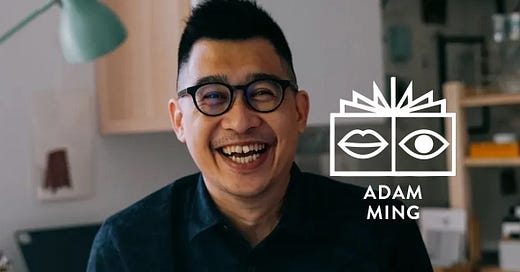





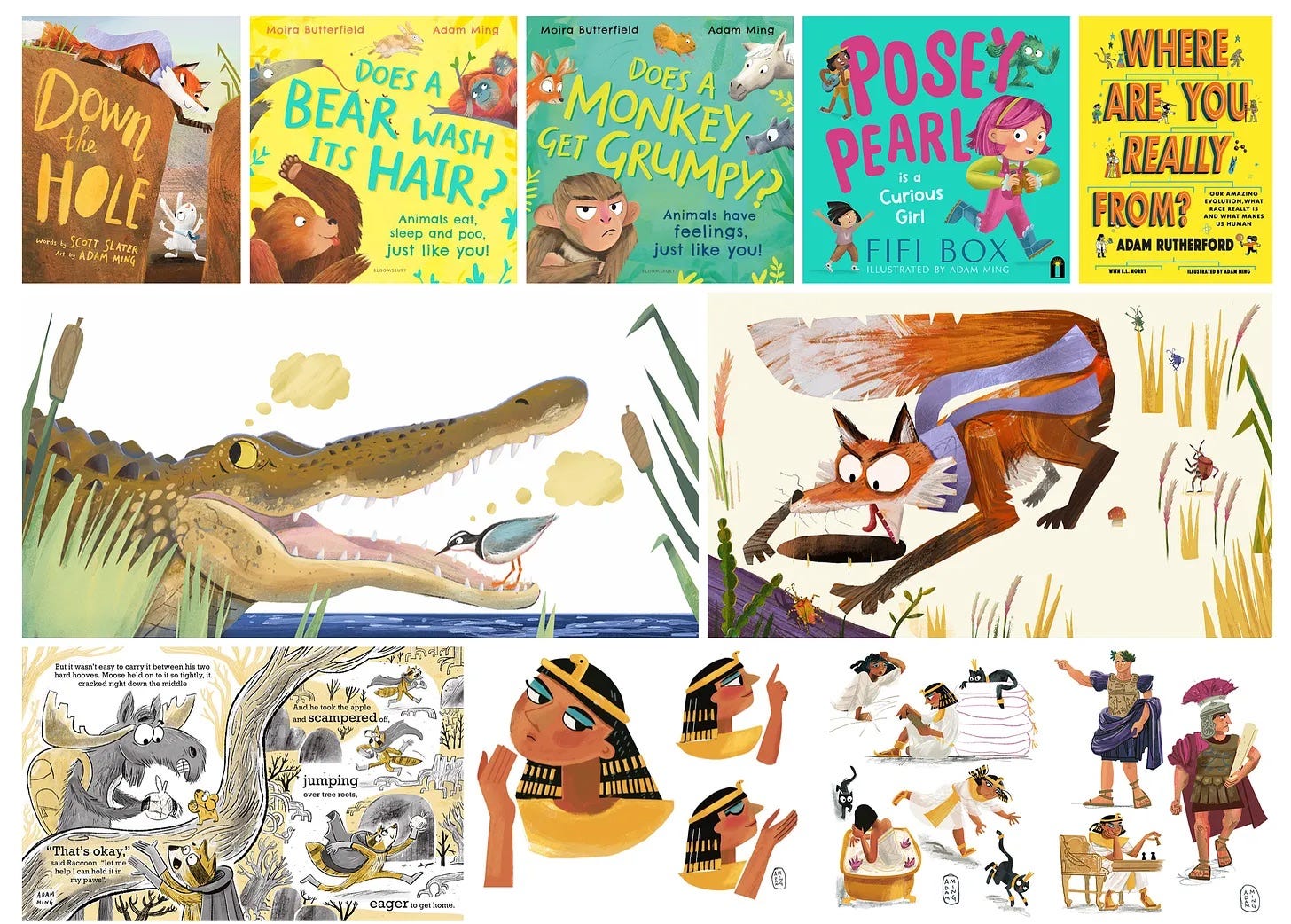
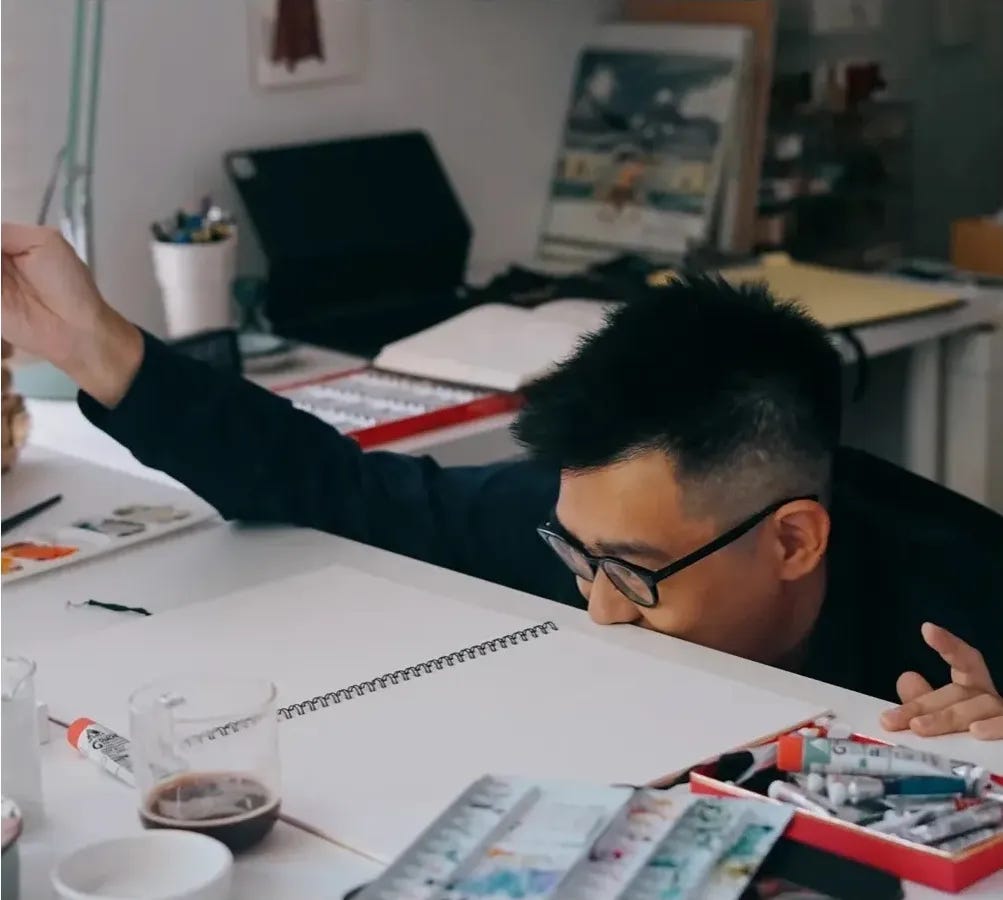
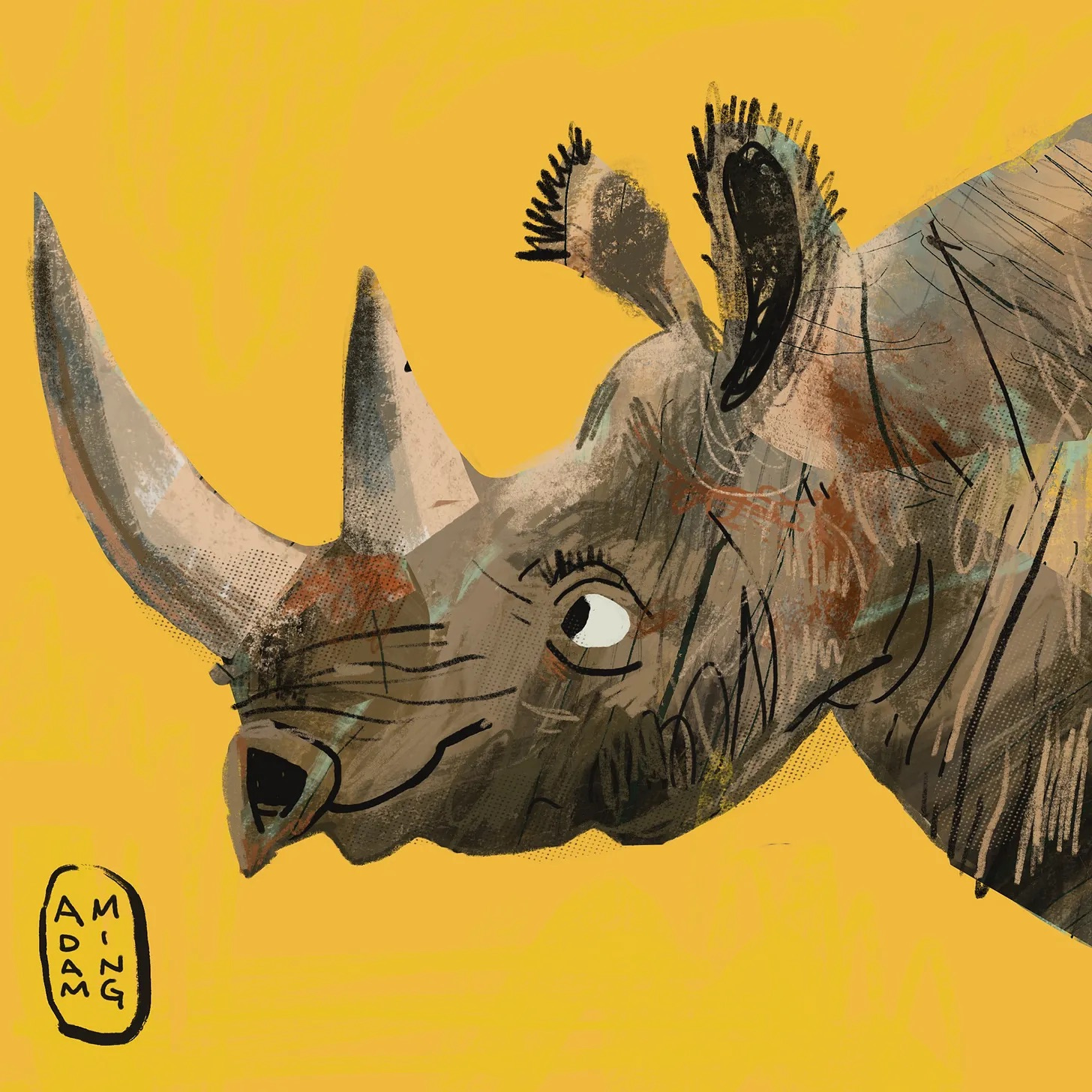
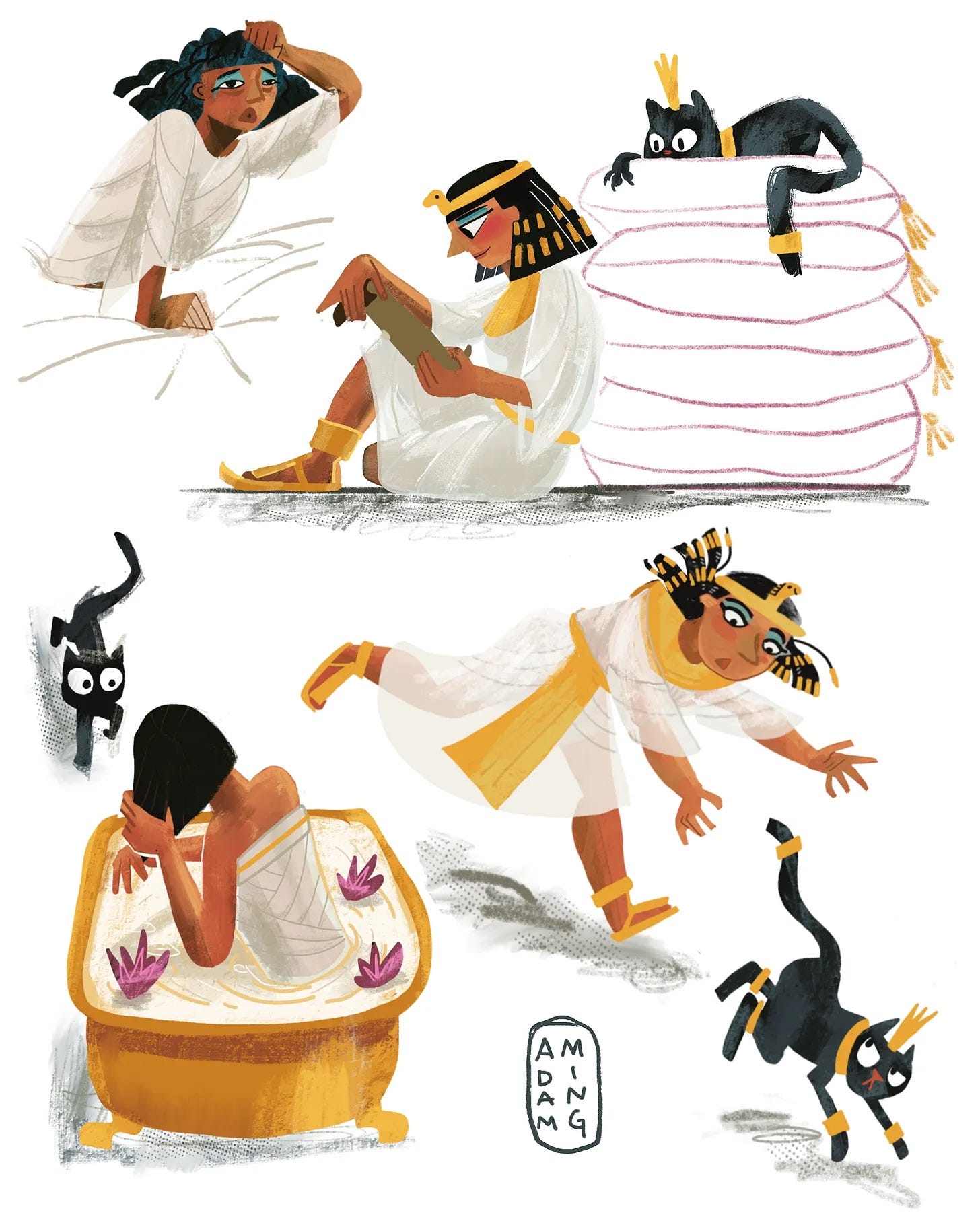
What a fabulous interview, Adam is always so genuine and generous in sharing his process and the steps he took to become a successful illustrator.